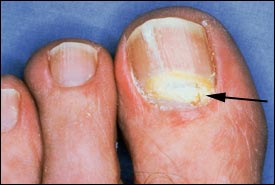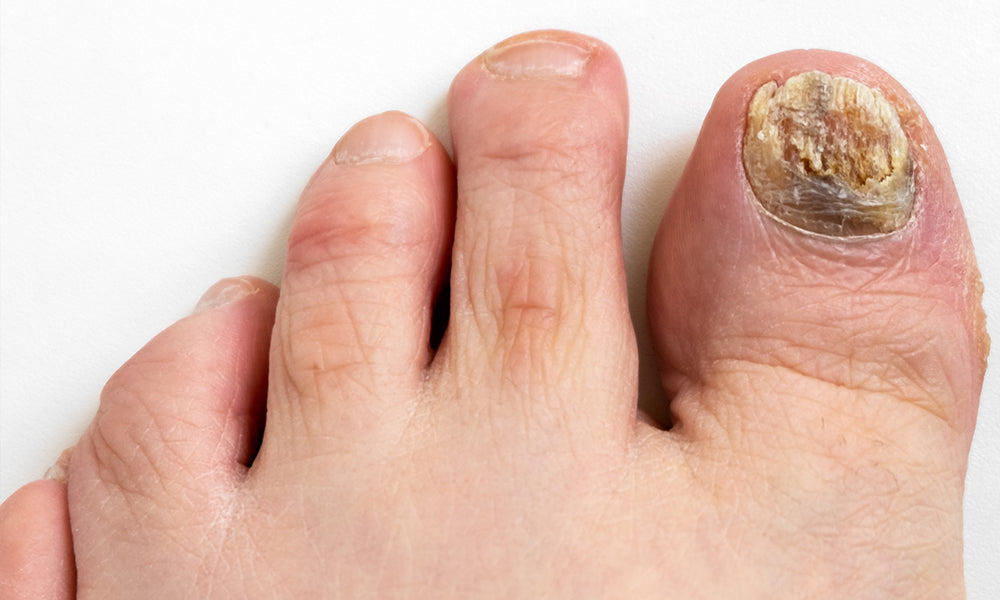Do your toenails start to smell after going swimming? Or do they have a yellowish-brown discoloration day after visiting the nail salon? If you have been experiencing these symptoms, there’s a huge chance that you have a fungal infection that is damaging your toenails. This condition is known as fungal nail infection or onychomycosis.
What Is Fungal Toenail Infection?
Fungal nail infections or onychomycosis refers to a condition that typically affects the toenails and sometimes the fingernails. It is caused by different species of fungi that may develop in your nails in two ways:
- Fungi that live in the environment can get inside your nails through an open wound or small cracks in the skin.
- Fungi already present in your body (normal flora) may overgrow or proliferate because of a weakened immune system or environmental factors (e.g. moist and dirty shoes).
Toenail fungal infections have four different types. It is differentiated based on its location and the type of fungal species that caused the infections.
Distal Subungual Onychomycosis or DSO
This is the most common type of onychomycosis, occurring in 60 to 70% of reported nail infection cases. It is also known to occur 20 times more common in the toenails than the fingernails.

Proximal Subungual Onychomycosis
Proximal subungual nail infection starts at the base of the nails, specifically in the lunula (the white, half-moon-shaped structure in the nails). It begins at the center of the toenail, then infects the proximal nail fold area.
White Superficial Onychomycosis or WSO
White superficial onychomycosis is another uncommon toenail infection that only occurs in 10% of all reported cases. It mainly affects the nail surface, causing “white islands” to appear on the infected area. Over time, the areas with white spots may become powdery, causing the nail to crumble.
Candidal Onychomycosis
This type of nail infection is caused by a yeast species called Candida albicans. It usually infects the structure underneath the nails (nail bed), causing it to get inflamed, edematous, and reddish.
What Do Fungal Nails Look Like?
Generally, nail fungal infections in the feet manifest, more or less, the same way despite its many types. You’ll know that it’s a fungal infection when there’s a discoloration of the nails, a change in texture, a change in shape, or a combination of the three. Here are some of its most common symptoms:
- Whitish, yellowish, or brownish spots in the nail, which may spread over time.
- Thickened, brittle, or crumbling nail.
- Oddly looking nail that features a distorted shape.
- A nail that looks like it’s coming off the nail bed.
- An unpleasant odor coming from the infected toenail

Causes Toenail Infections?
Fungi, moulds, and yeast overgrowth primarily cause fungal toenail infections. But how do they actually develop in, under, and on the toenails? Here are some of the most common situations or environmental conditions that might make you contract onychomycosis:
- Walking barefoot in warm, moist public spaces. This includes public swimming pools, communal showers, and gyms.
- Contact with a person (or their things) with fungal infection.
- A nail salon that does not disinfect or sanitize its materials properly.
- Old age may cause the toenails to become dry and brittle, causing tiny cracks in the nails. This then may become the entryway for fungi in the environment.
- Foot fungus such as Athlete’s foot, ringworm, and jock itch can also spread to the toenails.
- Underlying medical conditions, such as diabetes, weakened immune system, or poor blood circulation.
- A minor skin or nail injury, which can serve as the entry point of fungus.
- Anyone can develop a nail fungal infection. However, studies suggest it occurs mainly in males than in females and older adults than in children.
Additionally, fungal infections can be hard to treat without antifungal pills and fungal nails laser treatment. So, avoid resorting to home remedies you see on the internet if you have a foot fungus, or else it will develop into a nail infection that can be difficult to get rid of.
Author
Dr. DURGA SARAVANAN (PT., MSc Sports Biomechanics and kinesiology), Consultant physiotherapist.

